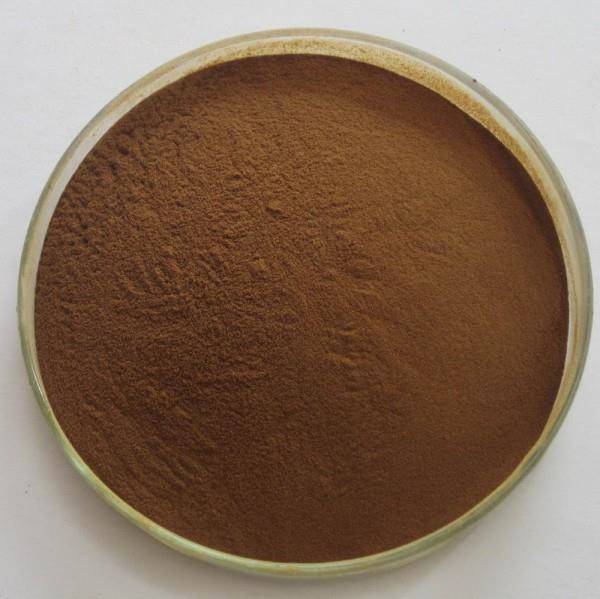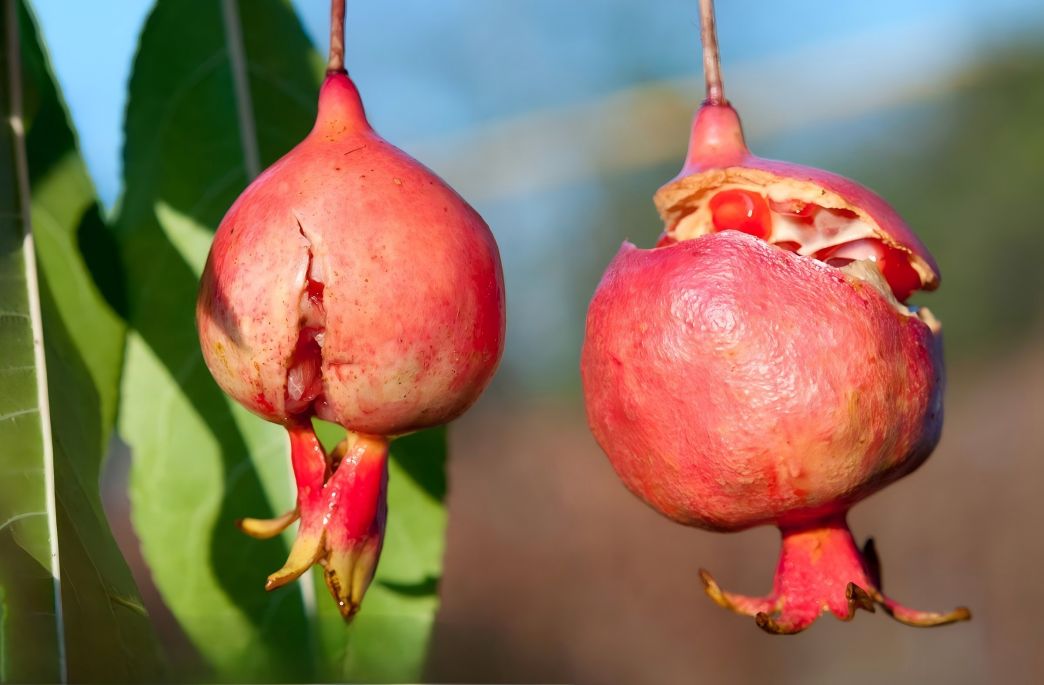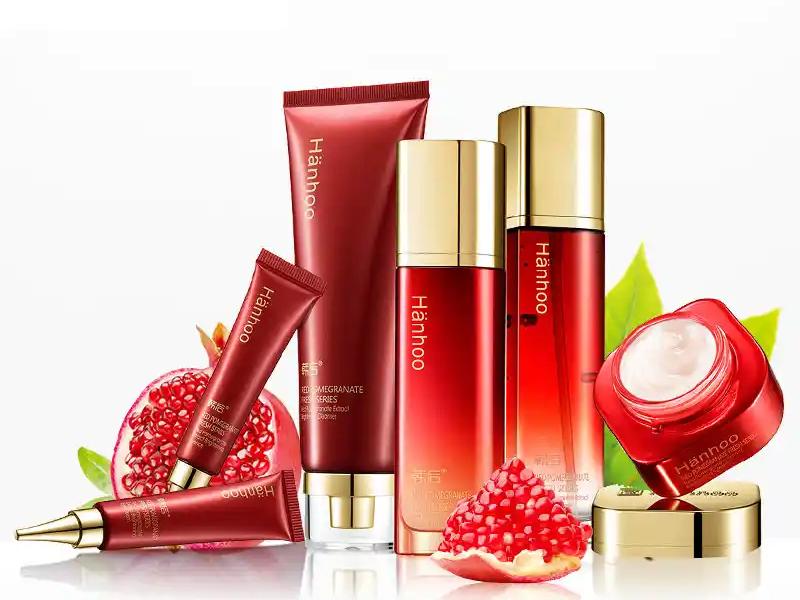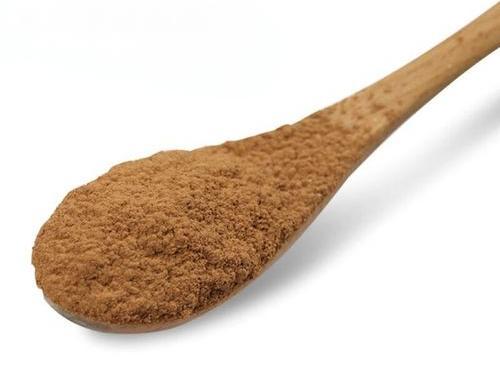What Is the Benefit of Pomegranate Peel Extract?
Pomegranate peel is the dried fruit skin of pomegranate, with astringent, hemostatic, insect repellent and other functions, is the “Chinese Pharmacopoeia” historical version of the species. Pomegranate (Punica granatum L.) is a plant of the genus Pomegranate in the family of Punicaceae, and it is a kind of dual-use plant for medicine and food. At present, pomegranate is mainly consumed freshly or processed into juice, jam and wine, while the pomegranate peel, which accounts for 20% to 30% of the pomegranate, has not been fully utilized, and most of it is discarded, resulting in a serious waste of resources. Years of research shows that pomegranate peel has significant antibacterial, anticancer, antiviral, antioxidant and other effects. Among them, the research on the antibacterial activity of pomegranate peel is more common. In recent years, the author reviewed the antibacterial effect of pomegranate peel extracts at home and abroad, in order to find and develop a new type of efficient natural antibacterial agent to replace traditional antibiotics, so as to provide theoretical reference for the control of the spread of pathogenic bacteria, and at the same time, to lay a foundation for the further expansion of the application of pomegranate peel in the field of food and medicine.
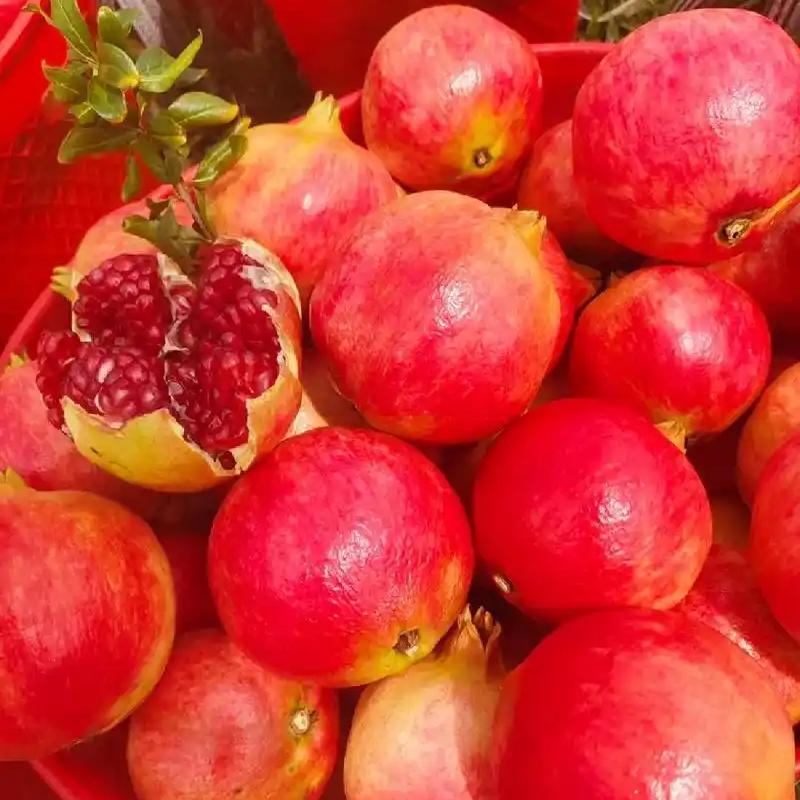
1 Bacteriostatic effect of pomegranate peel
Recent studies have shown that pomegranate peel decoction has inhibitory effect on dysentery bacillus, Shigella, Staphylococcus aureus, hemolytic streptococcus, cholera, Pseudomonas aeruginosa, typhoid fever, tuberculosis, and many kinds of skin fungi. Chen Xueshan et al. verified the bacteriostatic effect of pomegranate peel through a series of bacteriostatic tests. The diameters of the circles of inhibition of pomegranate peel extracts, concentrates, cold-dried powders and ointments on Staphylococcus aureus and Escherichia coli were in the ranges of 23.5-11.6 mm, the minimum inhibitory concentrations were in the ranges of 2,50078.1 μg/ ml, and the minimum bactericidal concentrations were in the ranges of 5,000-156.3 μg/ ml [1]. The results showed that pomegranate peel extract, concentrate, cold-dried powder and ointment have good in vitro antimicrobial activity. The metronidazole-resistant and sensitive strains of Helicobacter pylori are sensitive to it [2], and Acinetobacter baumannii can also be inhibited [3], and it has a significant inhibition on the production of gray mold conidia of tomato, the inhibition effect is positively correlated with the concentration.
In the greenhouse pot test, n-butanol extract diluted 100 times of the treatment of tomato gray mold protection and control effect reached 46.41%, treatment and control effect reached 48.00%, the tomato gray mold greenhouse pot has a very good prevention and control effect [4]. Li Zhifu et al. studied the in vitro antimicrobial effect and toxicity of ethanol extract of pomegranate rind also showed that it has good in vitro antimicrobial effect, is a non-toxic substance, skin irritation is relatively light [5]. Kong Yang et al. also showed that all the crude extracts of pomegranate peel had different degrees of inhibitory effects on three species of bacteria and ten species of fungi [6].
The crude extracts of pomegranate rind had a good overall bacteriostatic effect, especially against Staphylococcus aureus and Escherichia coli. There is no unanimous statement on the bacteriostatic mechanism of pomegranate peel, but some studies have shown that pomegranate peel extracts mainly inhibit the hexose phosphate pathway of the bacterium, inhibit the division of the bacterium in the logarithmic growth period, inhibit the synthesis of bacterial cell proteins, especially the synthesis of large molecular weight proteins, and change the surface and internal structure of the bacterium, which destroys the cell wall and causes the phenomenon of plasmic wall separation, resulting in the cell consolidation, and ultimately inhibit the growth and multiplication of the bacteria and kill the bacterium [7]. Finally, the growth and reproduction of the fungus were inhibited and died [7].
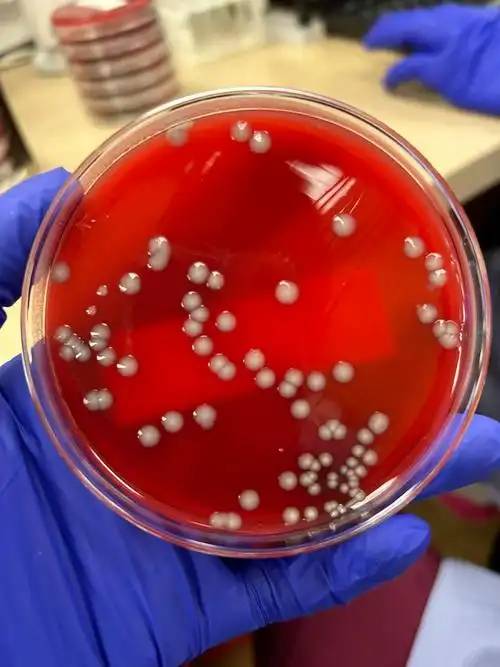
2 Inhibitory components of pomegranate peel
Pomegranate peel contains a variety of chemical components, such as polyphenols, flavonoids and alkaloids and other secondary metabolites, especially polyphenol mass fraction of up to 12% of the dry mass [8], which has been widely concerned by scholars in recent years. The polyphenols contained in pomegranate peel mainly include tannins and flavonoids [9]. In addition, pomegranate peel contains a variety of amino acids [10], as well as pentacyclic triterpenoids (ursolic acid and oleanolic acid), alkaloids and glycosides, organic acids, a variety of trace elements, resins, resin, resin, mannitol, sugar, inulin, waxes, mucilage, pectin, calcium oxalate, etc. [11]. These chemical components determine the significant antibacterial [12], antiviral [13], antioxidant [14], anticarcinogenic [15] and other pharmacological activities of pomegranate peel. Regarding the antibacterial components of pomegranate peel, Qiao Shuhua et al. extracted the active components of pomegranate peel by leaching method and conducted preliminary antibacterial tests on ethanol and petroleum ether extracts of pomegranate peel using cucumber wilt as test organisms, and the results showed that the antibacterial activities of pomegranate peel mainly consisted of four major groups of substances, namely, alkaloids, organic acids, flavonoids, and tannins [16].
The results showed that the antibacterial active substances of pomegranate peel were mainly alkaloids, organic acids, flavonoids and tannins [16], which had obvious antibacterial effects among the existing plant-derived antibacterial substances. Yang Lin et al. explored the effect of in vitro antibacterial activity of tanning substances and flavonoids in pomegranate peel, and the results showed that these two types of compounds in pomegranate peel on Staphylococcus aureus, dysentery bacillus Fuchsiae, Salmonella and Escherichia coli have obvious antibacterial effect, tanning compounds of the above four kinds of bacterial effect is more sensitive [17]. From this preliminary judgment, pomegranate peel antibacterial and anti-inflammatory treatment of enteritis, dysentery, the effective part of the two types of compounds should belong to.
Zhou Benhong et al. found that the tannins in pomegranate peel had a strong inhibitory effect on the growth of gonococci through the study of gonococcal susceptibility, although the mechanism of inhibition and the specific inhibitory active ingredients need to be further investigated, but it is expected to isolate new antigonococcal drugs from pomegranate peel [18]. The results of Guo Xiaoping et al. also showed that the tannins of pomegranate peel extract had strong inhibitory effects on Gram-positive bacteria (Staphylococcus aureus), and some inhibitory effects on Gram-negative bacteria (Hepatobacterium coli, Pseudomonas aeruginosa), while the inhibitory effects on molds (Penicillium, Aspergillus niger, Candida albicans) were not obvious [19].
Wu Guotao et al. through the study of Chinese medicine pomegranate skin tannin particles antibacterial effect, proved that tannin particles have astringent antidiarrheal function, and by delaying the excretion of the active ingredients of traditional Chinese medicine, enhance the absorption and utilization of traditional Chinese medicine in the intestinal tract, to strengthen the efficacy of Chinese medicine to achieve the antimicrobial effect; and traditional Chinese medicine Shuanghuanglian compared to the cure rate can be increased by 16.3%, the mortality rate decreased by 30.0%, and the Western medicine enrofloxacin therapeutic effect is the same [ 20]. 20]. The inhibitory effect of pomegranate peel may be mainly due to its tannin content, which has an obvious selective antibacterial effect, and should be used selectively during labor. The minimum inhibitory concentration of tannins in pomegranate peel extracts against these strains and the effect of clinical application need to be further investigated.
Pomegranate rind polyphenols were found to have a good inactivating effect on coccidian oocysts cultured in vitro [21]. Pomegranate rind polyphenols can denature proteins and promote their coagulation [22], which in turn denature the enzymes in the coccidia oocysts. Flavonoid compounds can also inhibit fungal growth by acting on enzymes [23]. However, further studies are needed to determine whether the flavonoids can kill the infected coccidia in rabbits.
Chen Xiaojuan et al. observed the in vitro inhibitory activity of total polyphenols of pomegranate peel on common clinical strains of representative bacteria and found that they had strong inhibitory effect on Staphylococcus aureus and some inhibitory effect on Escherichia coli; through the classical inflammation model test, they found that total polyphenols of pomegranate peel could significantly inhibit the swelling of auricle of mice induced by xylene, the increase of capillary permeability of skin of mice caused by xylene, and the leukocytes wandering of rats induced by carboxymethylcellulose [24]. leukocyte migration induced by carboxymethylcellulose in rats[24] . These preliminary studies suggest that this extract has good antimicrobial and anti-inflammatory effects, which provides a theoretical basis for further promoting the development of pomegranate peel polyphenols for topical use. Pomegranate peel has many chemical components, and its pharmacological effects are related to its active ingredients. With the deepening research on the functions of pomegranate peel, the understanding and utilization of pomegranate peel will be further improved.
3 Extraction of antibacterial components of pomegranate peel
Ru Shaogang et al. used water, 40% ethanol, 60% ethanol and acetone as solvents to extract the antibacterial components of pomegranate peel by microwave extraction, ultrasonic wave extraction and heated reflux extraction, and investigated the antibacterial effects of the extracts on Escherichia coli and Staphylococcus aureus [25]. The results showed that when 60% ethanol was used as the solvent, the microwave and ultrasonic extracts showed higher antibacterial activity than the heated reflux extracts, and were characterized by shorter extraction time and higher efficiency. Liu Yin et al. also extracted the antibacterial constituents of pomegranate peel under different conditions, and the results showed that the extraction time, extraction temperature, and the ratio of the extracted material to the liquid had a significant effect on the antibacterial efficacy of the pomegranate peel extract [26].
The optimal conditions for the extraction of pomegranate peel were 95 ℃, 8 h extraction time, and 1∶4 g/ml extraction ratio in an orthogonal test. The results of Qiao Shuhua et al. showed that the bioactivities of the dried pomegranate peels extracted by three different polar solvents, methanol, trichloromethane and n-hexane, were different against Cucumber blight, with methanol extract showing the most significant inhibitory activity, followed by trichloromethane [27]. The extracts of different polar solvents had bacteriostatic effects, among which the n-butanol extract with strong polarity had the best effect, and the bacteriostatic activities against the four pathogens were relatively strong, which also showed that the bacteriostatic active ingredients of pomegranate peel were mainly concentrated in n-butanol extract, indicating that the active ingredients might be substances with strong polarity, and their active ingredients need to be further investigated.
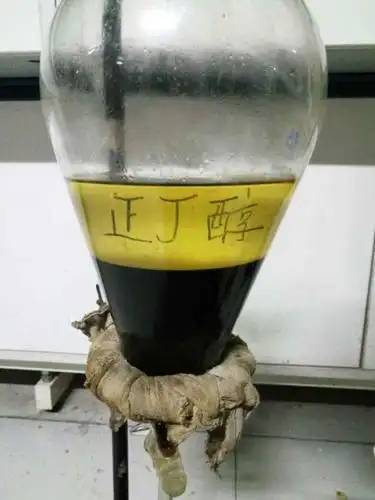
In order to optimize the extraction process of pomegranate peel polyphenols, the microwave-assisted extraction of pomegranate peel polyphenols was carried out, and the optimal extraction conditions were determined by one-way and orthogonal tests as follows: the number of sieve mesh was 60-80, the extraction power was 385 W, the material-liquid ratio was 1∶25 g/ml, the extraction time was 120 s, and the number of extraction times was 3 times. Under these conditions, the highest yield of pomegranate peel polyphenols was 21.4% [28]. The concentration of pomegranate peel polyphenols in the crude extract was 0.96 g / ml, which showed the greatest inhibitory effect on Staphylococcus aureus, Proteus mirabilis and Bacillus cereus, with the corresponding diameter of the inhibition circle of 1.15, 1.10 and 0.95 cm, and the minimum inhibitory concentration of 0.80, 1.60 and 0.40 g / ml, respectively. Xiong Suying et al. determined the circle size and minimum inhibitory concentration of the extract on common bacteria, yeasts and molds, and at the same time studied the effects of pH, temperature and ultraviolet light on the inhibition of the extract [29].
The results showed that the aqueous and ethanol extracts of pomegranate peel had certain inhibitory activities on bacteria, yeasts and molds, and the inhibitory effects were bacteria>mold>yeast, and the inhibitory activity of ethanol extract was better than that of the aqueous extract. The antibacterial activity of ethanol extract was better than that of water extract. The antibacterial effect of the extract was significant under acidic conditions, and it belonged to acidic preservative, and its antibacterial activity could be reduced by high temperature treatment for a long time. The antibacterial components in pomegranate peel are very unstable, and heat, light and other factors in the process may cause the degradation of the active ingredients. Adopting appropriate extraction conditions to maximize the extraction of antibacterial components is the basis for the development and utilization of pomegranate peel.
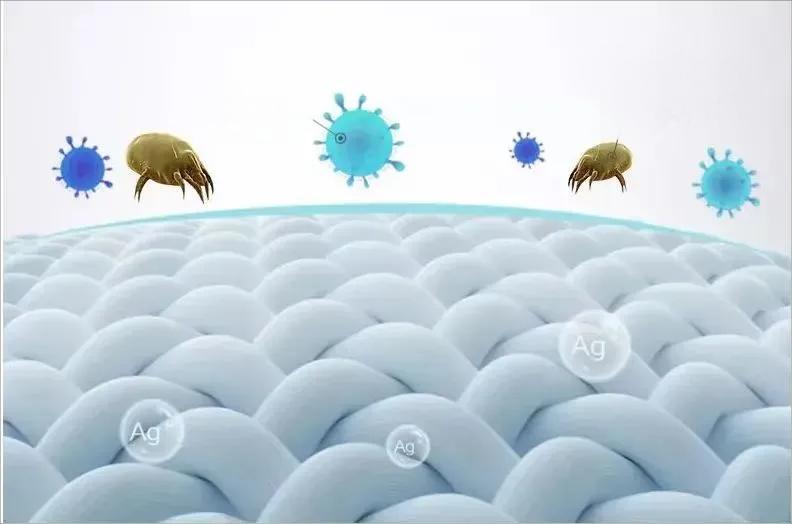
4 Summary and Prospect
Pomegranate skin is an extremely novel antibacterial plant resource with great potential for application and development, as it can replace traditional antibiotics and can be used as a substitute for antibiotics. It can replace traditional antibiotics to solve the problem of increasing resistance of pathogenic bacteria; it can also replace traditional food additives and chemical preservatives to solve the problem of food safety; and it can also play a very good role in suppressing agricultural diseases in agriculture, which is especially suitable for vegetable disease prevention and treatment, and can reduce the residues of chemical pesticides.
Currently, the research on pomegranate peel mainly focuses on medicine, clinical medicine and food bacteriostasis. This study briefly summarizes the antibacterial components, antibacterial effects and extraction methods of pomegranate rind. Pomegranate peel has many chemical components, and its pharmacological effects are related to its active ingredients. It has obvious selective antimicrobial effect, and should be used selectively in labor and delivery. The minimum inhibitory concentration of pomegranate peel extract strains, as well as the effect of clinical application, the mechanism of action and the optimal extraction process need to be further investigated. With the deepening research on the functions of pomegranate peel, the understanding and utilization of pomegranate peel will be further improved.
References
[1]Chen Xueshan, Gao Xiaoli. In vitro bacteriostatic test of pomegranate peel extract, concentrate, cold-dried powder and pomegranate peel ointment[J]. Journal of Xinjiang Medical University, 2009, 32 (5): 565-567.
[2] Hu Wei, Dai Wei, Yang Yumei. In vitro inhibition of Helicobacter pylori by pomegranate peel[J]. Modern Gastroenterology and Interventional Medicine, 2006, 11 (1): 6-8.
[3]Chen Zehui, Tian Yingbiao, Li Dandan. Inhibitory effects of Schisandra chinensis and pomegranate peel on Acinetobacter baumannii in vitro[J]. Chinese Journal of Hospital Pharmacy, 2011, 31 (15): 1248-1251.
[4] Qiao Shuhua, Jiang Hongyun, Zhang Yanning. Inhibitory effect of pomegranate peel extract on gray mold of tomato and disease prevention[J]. Plant Protection, 2010, 36(1): 148-150.
[5] LI Zhifu, MAO Wenkui, SHAO Wei, et al. Antibacterial effect and toxicity of ethanol extract of pomegranate peel on clinical isolates[J]. Chinese Journal of Sterilization, 2009, 26(2): 162-164.
[6]Kong Yang, Ma Yangmin, Li Yanjun, et al. Study on the antibacterial activity of crude extract of pomegranate peel[J]. Food Science and Technology, 2008(9) : 199-201.
[7]DONG Z Y,LIU X H,ZHAO G J.Anti-Bacterial Mechanism of Pomegran- ate Peel on Staphylococcus aureus[J / OL].http : / /wenku.baidu.com/ view/00b1d70b52ea551810a687b0.html.
[8]MIRDEHGHAN S H,RAHEMI M.Seasonal changes of mineral nutrients and phenolics in pomegranate fruit[J].Scientia Horticulture,2007,111 (2) : 120-127.
[9] Liu Yanze, Li Haixia. Tannins and polyphenols in pomegranate peel[J]. Chinese herbal medicine, 2007, 38 (4) : 502-504.
[10]Liu Jiafu, Zhou Jiaqi. Analysis of the main components of pomegranate in Mengzi, Yunnan [J]. Yunnan Agricultural Science and Technology, 1995 (6) : 17-18.
[11] EMANUELE F. Therind of the pomegranat e fruit [J]. Rrog Terp Sez Farm, 1992, 18: 183-185.
[12] QIAO Shuhua, JIANG Hongyun, ZHANG Yanning, et al. Preliminary study on the antibacterial activity of pomegranate peel [J]. Agricultural Pharmaceuticals, 2009, 48(4): 299-300.
[13]Jie Zhang, Bingyan Zhan, Xuejun Yao, et al. Inactivation of hepatitis B virus (HBV) by pomegranate peel in vitro and its clinical significance[J]. Pharmacology and Clinic of Traditional Chinese Medicine, 1997, 13(4): 29-30.
[14]Xi Zhang, Dongying Jia, Kai Yao, et al. Study on the antioxidant effect of pomegranate peel extract[J]. Chinese Fats and Oils, 2006, 31 (8): 51-55.
[15] Zhou Benhong, Wang Huiyuan, Guo Zhilei, et al. Scavenging effects of pomegranate peel tannins on hydroxyl radicals and superoxide anion radicals[J]. Chinese Journal of Hospital Pharmacy, 2008, 28(17): 1442-1445.
[16] Qiao Shuhua, Jiang Hongyun, Zhang Yanning. Determination of chemical components of pomegranate rind and preliminary investigation of antibacterial activity [C]/ / Cheng Zhuomin. Innovation and Development of Plant Protection Science and Technology---Proceedings of the 2008 Annual Conference of the Chinese Plant Protection Society. Beijing : China Agricultural Science and Technology Press, 2008: 821-824.
[17] Yang L, Zhou BH. Experimental study on the antibacterial effects of tannins and flavonoids in pomegranate peel[J]. Shizhen Guojian, 2007, 18(10):2335-2336.
[18] Zhou Benhong, Liu Chun, Chen Leishi. Study on the susceptibility of tannins in pomegranate peel to gonococcus [J]. Chinese Journal of Pharmacy, 2006, 41 ( 19): 1510.
[19]Guo Xiaoping, Yin Miao, Chen Xiwen, et al. Extraction of tannins from pomegranate peel and in vitro antibacterial activity[J]. Jiangsu Agricultural Science, 2011, 39(3) :403-405.
[20] WU Guotao, YAO Jingming, ZHANG Lijun. Antibacterial effect and toxicity of pomegranate peel tannins[J]. Journal of Chinese Veterinary Medicine, 2006(6):32-33.
[21]Wang Xide, Sheng Shujuan, Zhu Jianping. Killing effect of pomegranate peel extract on the oocysts of Coccidioides immitis in isolated rabbit cultures[J]. China Animal Husbandry & Veterinary Medicine, 2012, 39(2): 212-215.
[22]Du Xin, Ye Shengying. Progress of pharmacological activity of pomegranate leaf and pomegranate peel[J]. Tianjin Pharmacology, 2007, 19(2): 64-66.
[23] Zhang Peicheng. Flavonoid chemistry [M]. Beijing: Chemical Industry Press, 2008: 364-365, 373-374.
[24] Chen Xiaojuan, Gu Zheng, Huang Hua. Preliminary study on the antibacterial and anti-inflammatory effects of total polyphenols from pomegranate peel[J]. Northwest Journal of Pharmacy, 2011, 26(4): 268-270.
[25]Ru Shaogang, Cui Bo, Chi Yuxia. Effects of extraction methods and solvents on the extraction of antibacterial components from pomegranate peel[J]. Chemical and Biological Engineering, 2011, 28(12): 43-45.
[26]Yin Liu, Shengtang Zhang, Yuling Huang. Study on the optimal extraction conditions of antibacterial substances from pomegranate peel[J]. Food Research and Development, 2007, 28(8): 59-61.
[27]Qiao Shuhua, Jiang Hongyun, Zhang Yanning, et al. Preliminary study on antibacterial active substances of pomegranate peel[J]. Agricultural Pharmaceuticals, 2009, 48(4) : 299-300.
[28]Wang Ling, Jiao Shirong, Lei Menglin. Extraction and antibacterial effect of polyphenols from pomegranate peel[J]. Anhui Agricultural Science, 2010, 38(5): 8995-8897.
[29]Xiong Suying, Yue Tianli. Research on the antibacterial effect of pomegranate peel extract[J]. Food Industry, 2007 (5) : 18-20.


 English
English French
French Spanish
Spanish Russian
Russian Korean
Korean Japanese
Japanese